For many visitors, Yogyakarta is often little more than a pit stop en route to the ancient Buddhist temple of Borobudur. But mention the Javanese city to Indonesians and their faces light up with wistful affection. Better known as Jogja to locals, Yogyakarta is Java’s cultural and geographical heart, the former capital and home to the only active monarchy in the country. The city and the surrounding autonomous region are ruled by Sri Sultan Hamengkubuwono X, whose family has reigned since before the Dutch arrived in the late 16th century.
It’s a city where traditions are kept alive, including the culinary ones. While locals have long loved Jogja’s unique cuisine, it was only after the city was featured on Netflix’s Street Food in April this year that the city found a spot on international foodies’ radar.
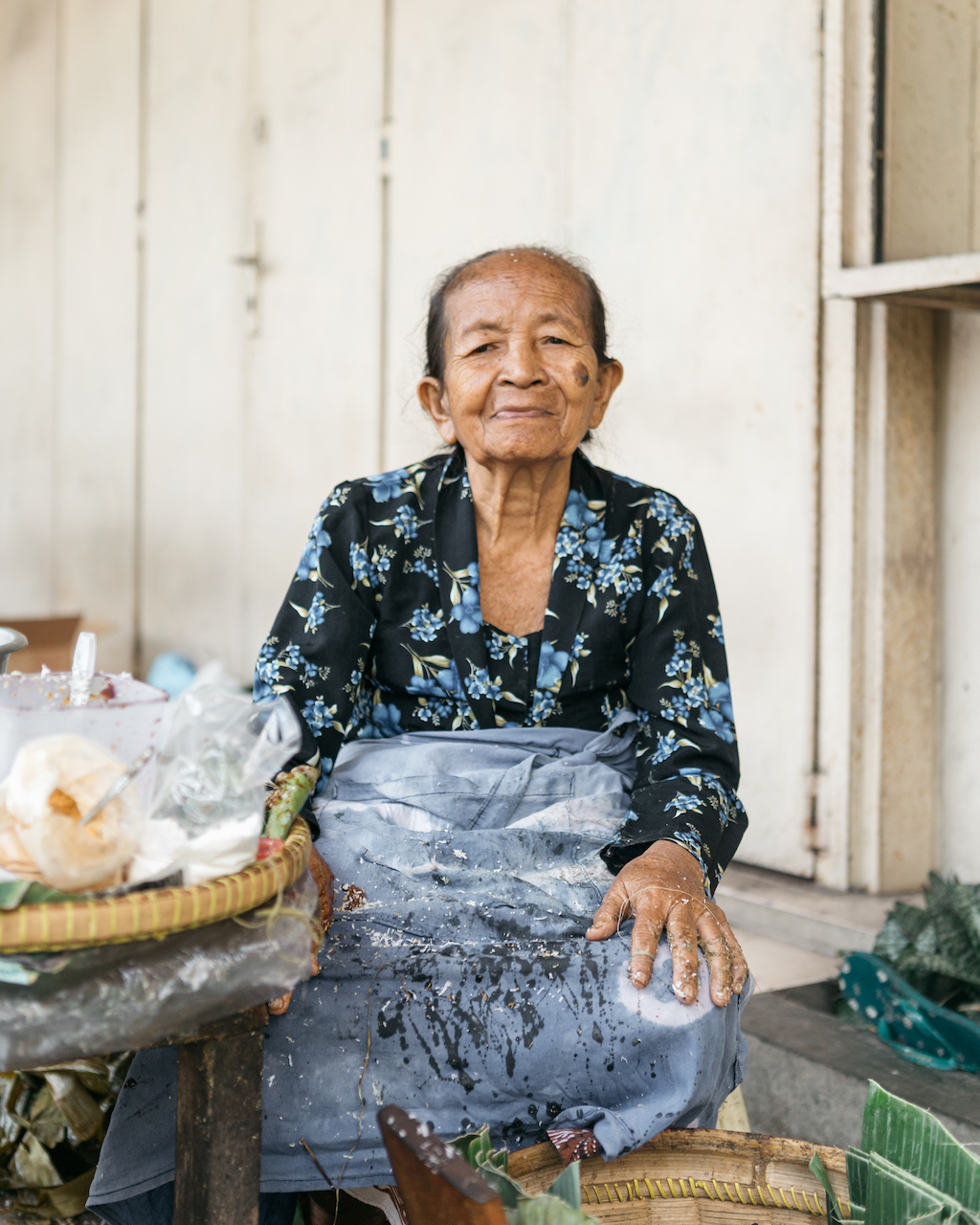
“Jogja cuisine is basically sweet, which makes it easy for people from different backgrounds to like it,” says Kalika Prajna, a local tour guide with Yogyakarta Night Walking and Food Tours, which introduces visitors to some specialities the area is known for.
One such heritage dish is jajan pasar, sweet snacks made from combinations of rice flour, sticky rice, cassava and coconut – and the star offering at Mbah Satinem’s stall. Every morning, since 1963, Mbah Satinem has set up her business on the corner of Jalan Bumijo and Jalan Pangeran Diponegoro. Mbah is the honorific of “grandma”, a title she’s earned through age and experience, as well as conventionally – her middle-aged daughter Mukinem, herself a mother, now works beside her.
Along with a wall of other customers standing around patiently, I watch as Mbah Satinem moves about her work with expert precision. From a basket at her feet, Mukinem takes a portion-cut banana leaf and hands it to her mother whose arms dart back and forth as she fills the leaf with a large bowl of sticky rice, followed by a generous serving of shredded coconut. In between serves, Mbah Satinem skilfully cuts her speciality, lupis (a cake made from glutinous rice) using a taut piece of string held between her gnarled fingers. Placing a few slices atop the rice, she drizzles thick palm sugar syrup over the top, folds the flat banana leaf into a cone and hands it to a waiting customer.
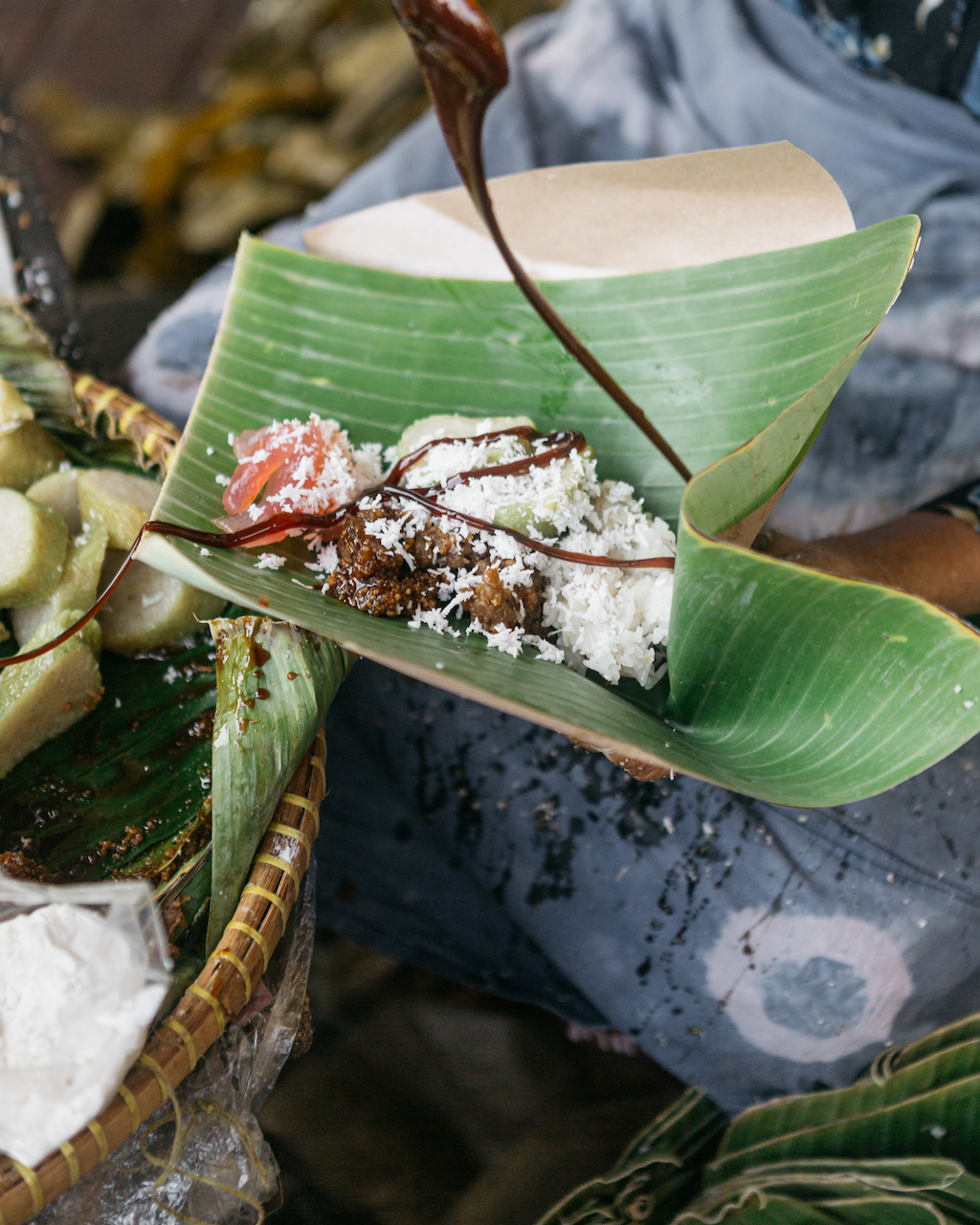
The ever-smiling Mbah Satinem, who made an appearance on Street Food, reflects that before the show, “there were no foreigners that wanted to buy lupis, usually only people around here or people from Jakarta.” For her, the international exposure has meant a new stream of clientele.
Mukinem adds, “God willing, I will continue selling lupis here. If people are looking for lupis, they know to come straight here.”
From one mbah to another
At the 2018 edition of the Ubud Food Festival, I spoke to founder and director Janet DeNeefe about “the most unique dining experience of [her] life”. She was referring to an unforgettable meal at Mbah Marto’s catfish restaurant. Coming from an Indonesian restaurateur of over 30 years, it was no small praise, and I knew I had to check it out for myself.
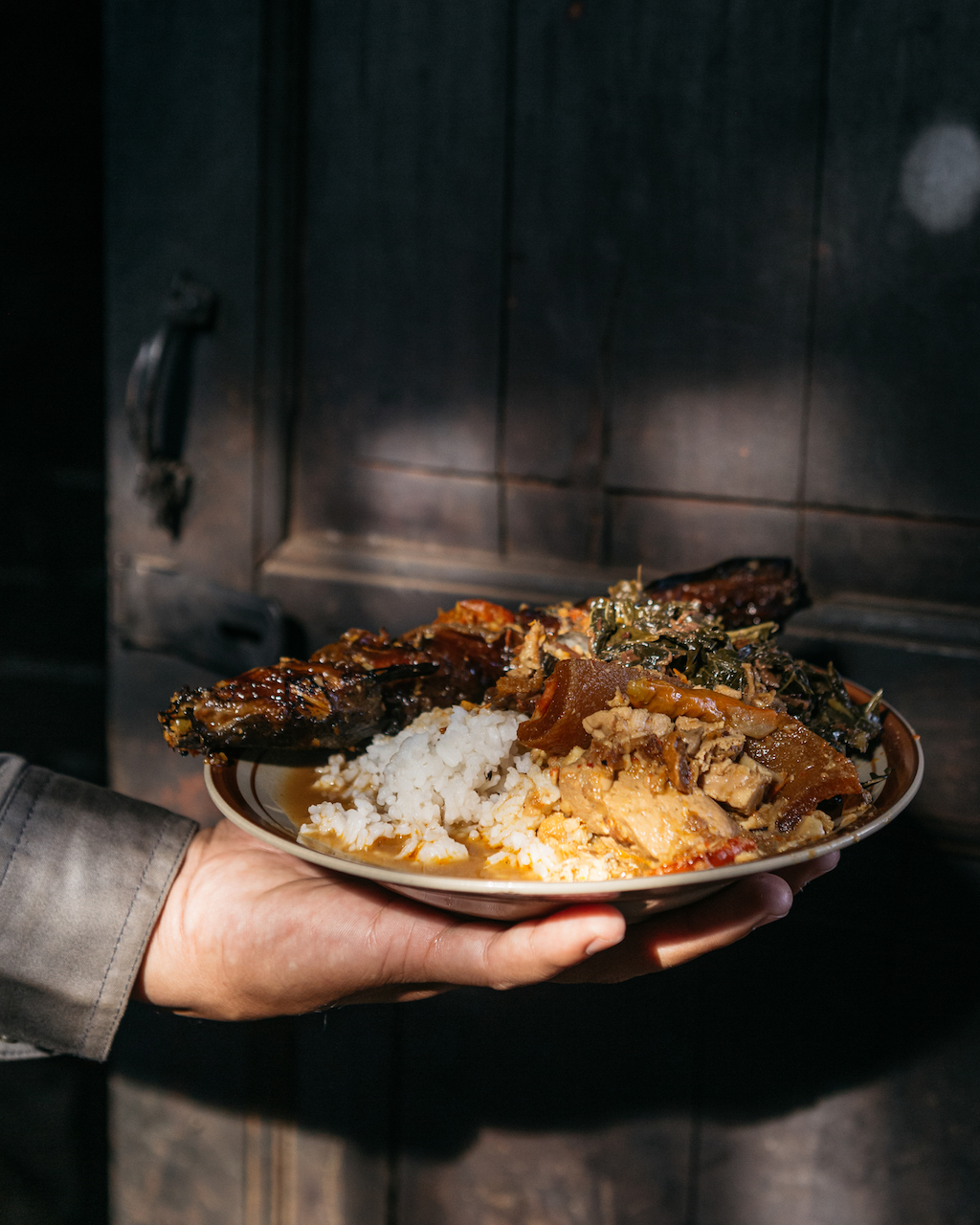
The restaurant where Mbah Marto creates this mythical mangut lele (grilled catfish) dish is found within a simple four-room brick house, located down a narrow lane 20 minutes south from the city centre. Mbah Marto has been cooking smoked catfish since the 1960s, and is said to be in her 10th, 11th or even 13th decade, a little mystery that befits such a culinary legend. With a sense of intrigue, I step into the restaurant.
The front two rooms are painted a bright pandan green and outfitted with bench tables, with more seating on the terrace. There are no menus and no wait staff. Instead diners must walk past the scullery, to serve themselves directly from the pawon (kitchen).
“The food here is laden with childhood nostalgia”
Inside the pawon, a tiny, wiry woman sits in a corner, pounding candlenuts, shallots, ginger and garlic in a mortar and pestle. This is Mbah Marto, the matriarch and the hardest worker in this operation. Now permanently hunched over from her years of toil, she shuffles and swivels from her squatting position, gently stirring the massive cauldrons of hot chilli sauce, and tending the woks of catfish simmering in the finished sauce.
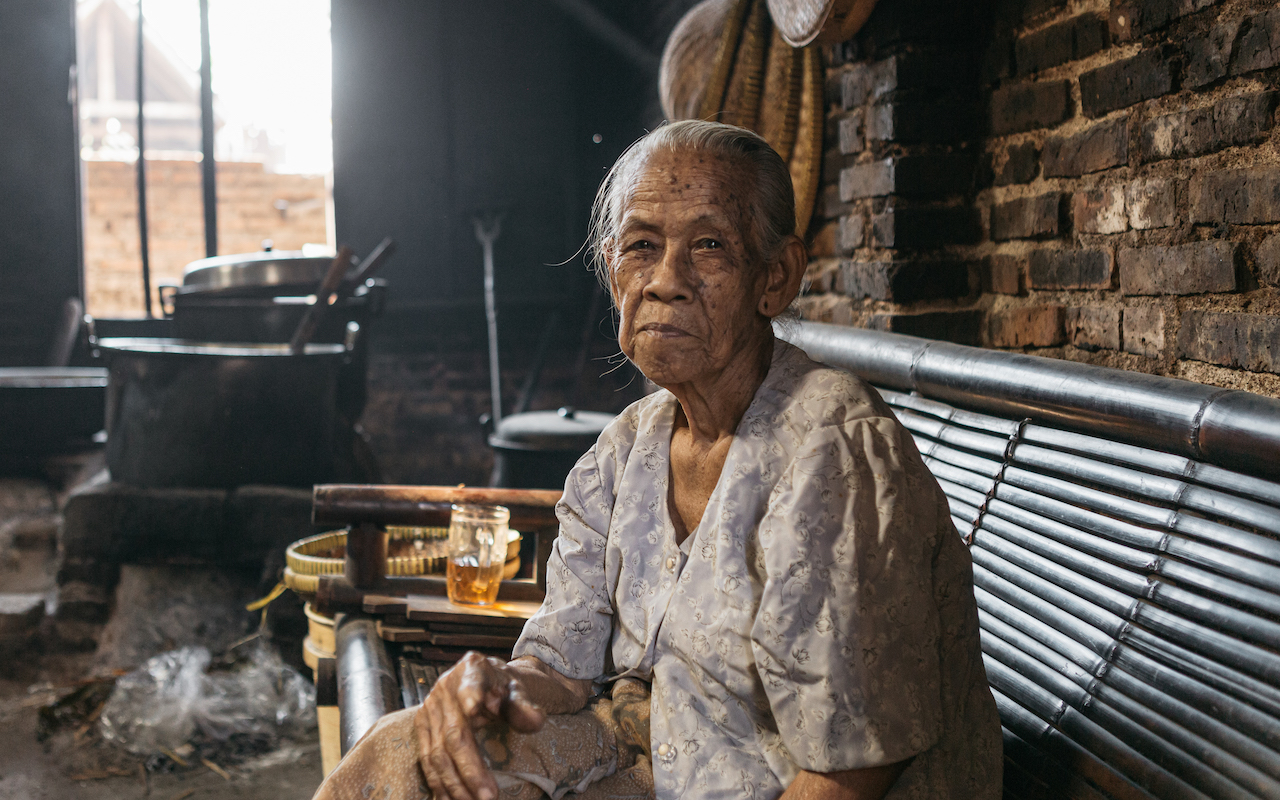
Pots are spread across the concrete floor, where fires fuelled with coconut husks are set among piles of ash. The smoke is so thick and the room so blackened that the bolts of sunlight streaming through ceiling ventilation holes resemble laser beams. But this fire is what lends the fish a distinctive and satisfying smokiness.
On the other side of a room, a bamboo bed-shaped structure is laden with tubs of local dishes: opor ayam (chicken cooked in coconut milk), krecek (fried cow skin) and gudeg (jackfruit and coconut). Jiyok, a smiling kitchen assistant, hands me a couple of the catfish sticks, while I tentatively fill my plate with rice and some sides.
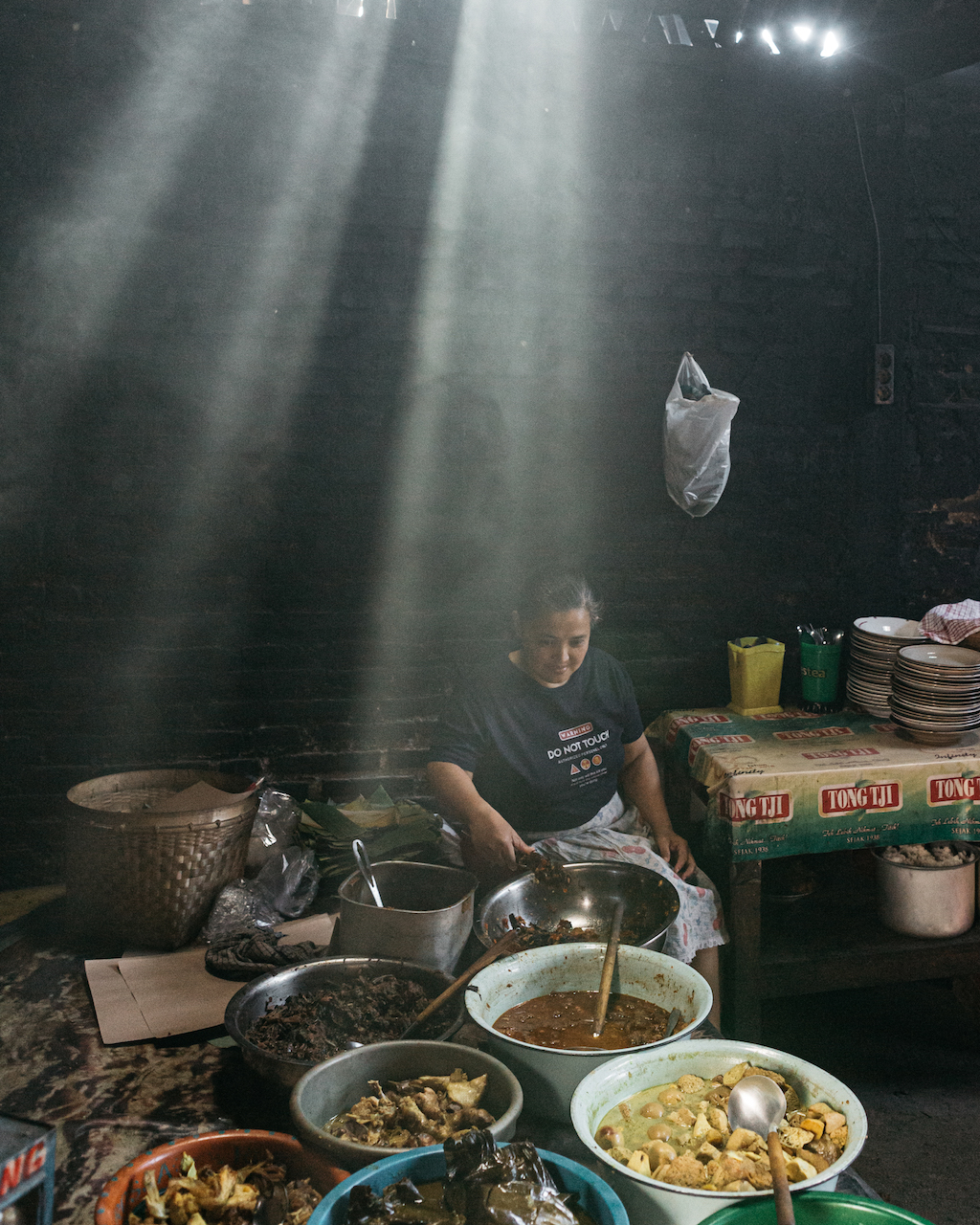
I take my seat in the dining area, with the diverse crowd of smartly dressed out-of-towners and uniformed police officers on a lunch break, and dig in. The fish is easily one of the most striking Indonesian dishes I’ve tried. The intense smokiness stands firm against the second stewing stage of cooking that adds the full-on chilli hit.
According to local food educator Amaliah, smoked catfish had long been a popular home-cooked meal, but fewer people have the time or skill to make it today. “This is why eateries like Mbah Marto are so popular,” she explains. “The food served here is laden with childhood nostalgia.”
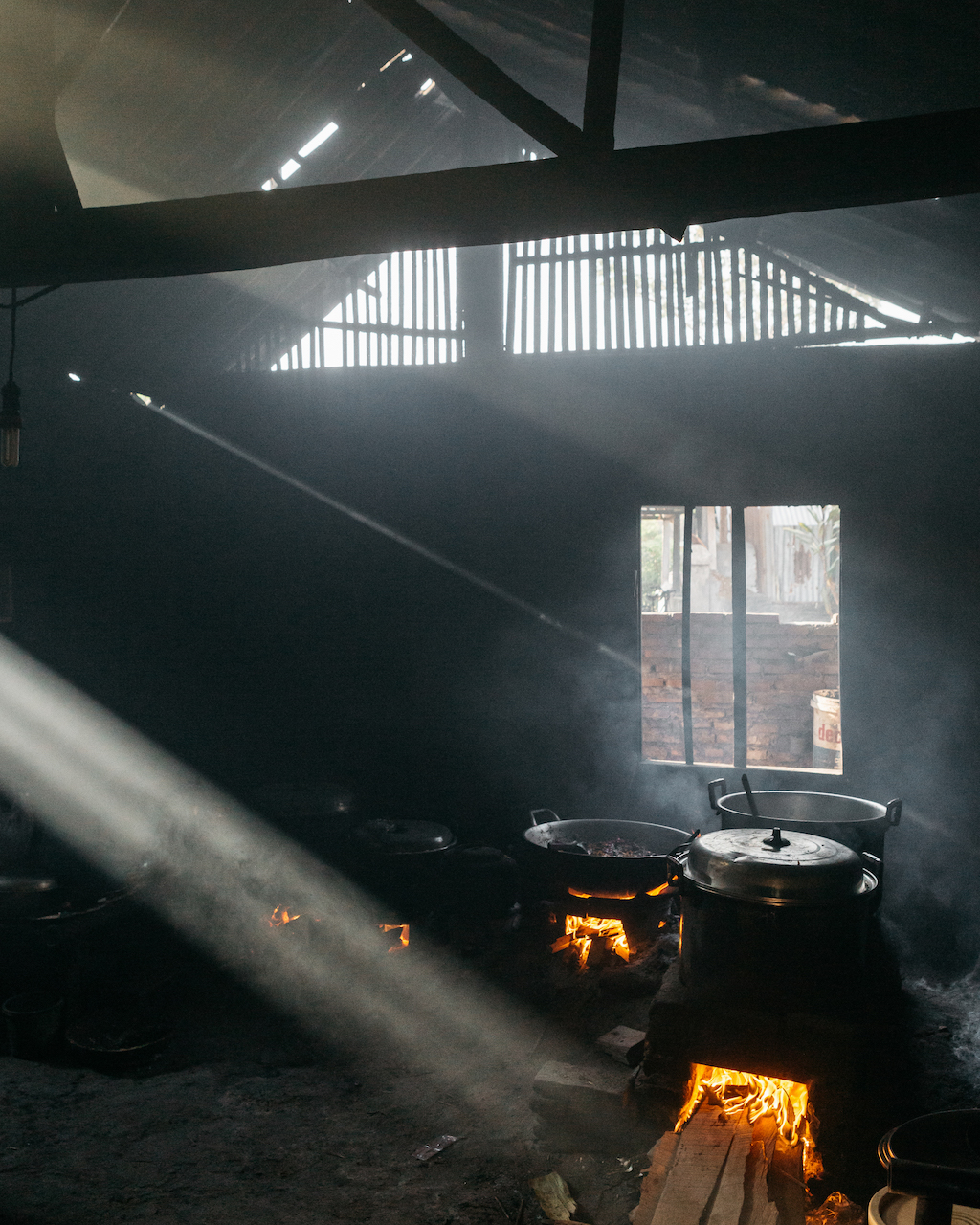
As I polish off my meal, I see that Mbah Marto is taking a break outside and chatting to another diner. Having her photo taken is a task she clearly takes to like a good-natured pro, ever ready with a thumbs up and a friendly grin. Her social media savvy is paying dividends. Recently, the restaurant extended its hours but in an adjacent house, which is run by her children and grandson. With a gentle smile, Mbah Marto says, “I hope all my children can continue here… the fortune comes from this kebul (smoke).”
A new Jogja tradition
At mid-afternoon in the heart of Jogja, I am wandering around Jalan Wongsodirjan. Street food vendors are starting to set up for the day. Stall after stall line up cheek-by-jowl, many of them selling sate. Central Java’s signature skewer is the sate kere (loosely translated to “poor man’s sate”), made from beef intestines. It’s a preparation that dates back to when sate was a delicacy only affordable to the rich. Today, everything from meat to quail’s eggs and even snails are skewered on bamboo sticks and cooked over a charcoal fire.
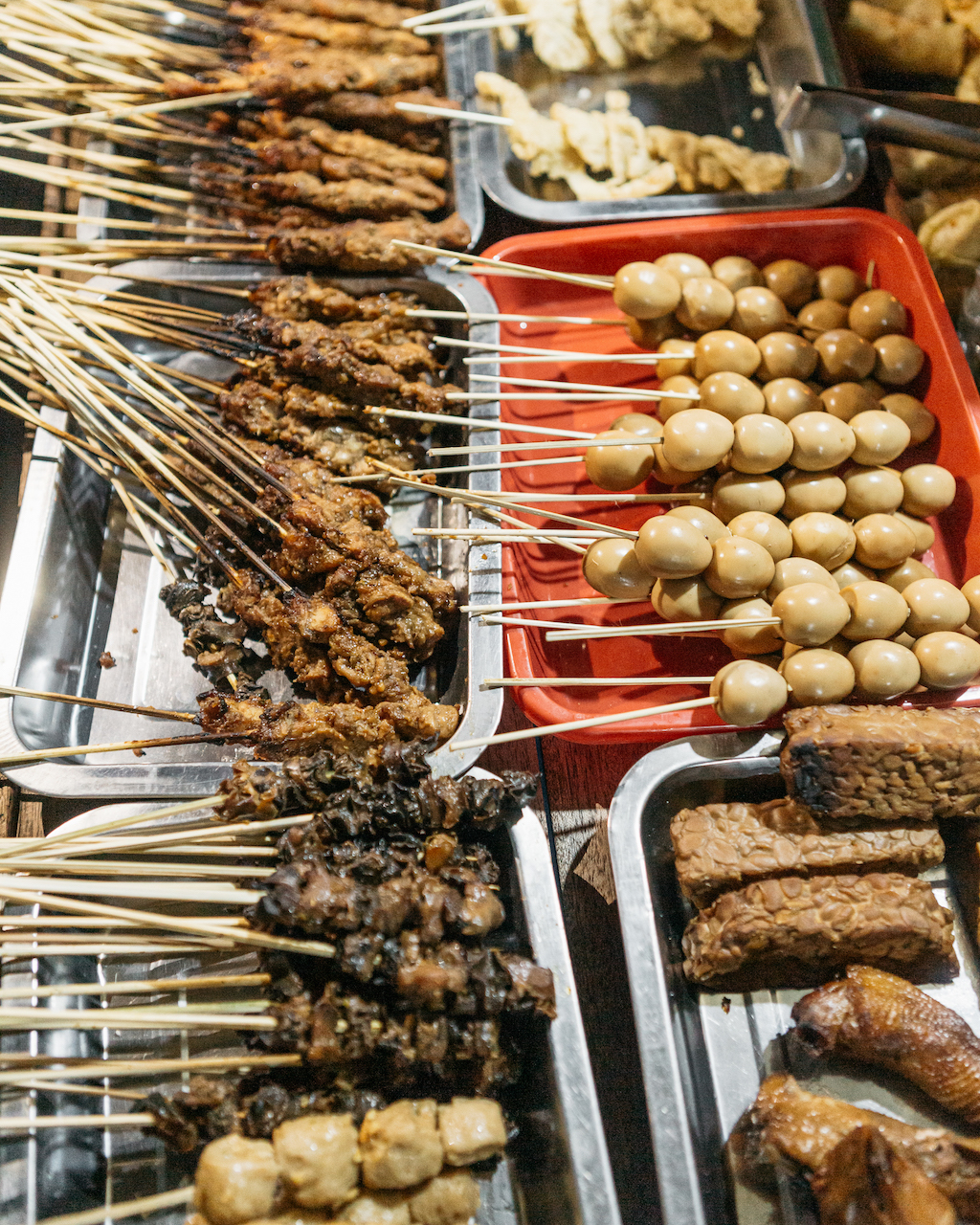
As enticing as the skewers look, my attention is drawn to one vendor holding a glowing red ember with a pair of tongs. This stall, Kopi Jos Lik Man, is best known for its unexpected caffeine offering. While the stall’s namesake and creator, himself a second-generation stallholder, has retired, his son Kobar continues the unique family tradition.
Kopi jos is named for the hissing sound made when a molten-hot piece of coal is submerged in a glass of coffee. Apparently, the unusual preparation was created when railway workers asked Pak (Mr) Lik Man for traditional kopi klotok (made by boiling ground coffee and water together – a process that makes the sound klotok klotok). Doing that would require another stove – something Pak Lik Man didn’t have the space for. “Instead, he put burnt charcoal in the coffee so it would be as hot as kopi klotok,” Kobar shares. “After that, it just became a habit.”
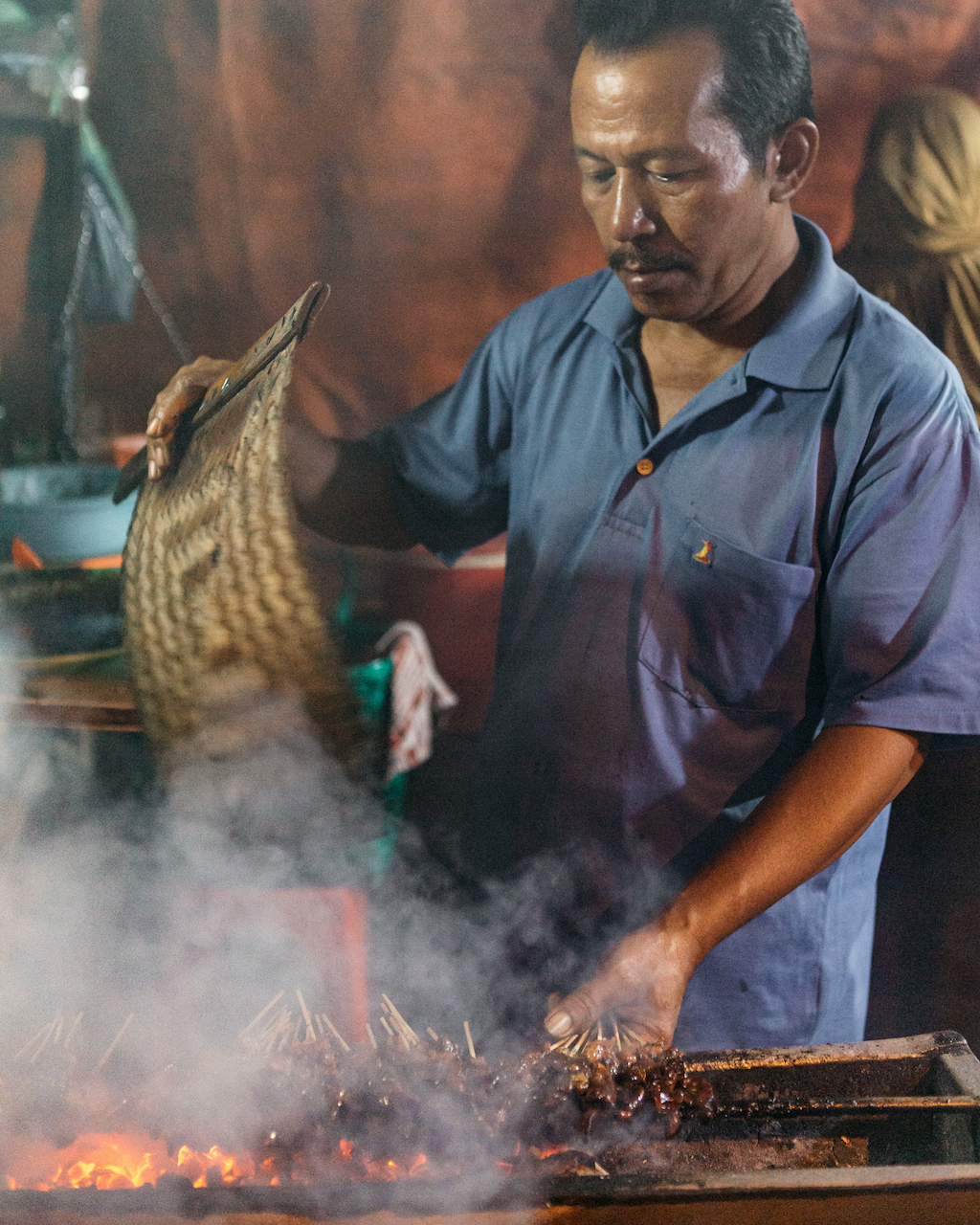
I watch with fascination as Kobar prepares the coffee in a tall glass by mixing the ground coffee with a couple of spoonfuls of sugar before adding boiling water poured from a large teapot. Stirring furiously, he lifts the teapot again, this time reaching into the fire to extract a glowing red piece of charcoal. It sizzles dramatically as he places it into the glass, creating plumes of steam. He repeats the process with a second ember then places the glass on a saucer and hands me the coffee.
Sitting on a low bench, I cautiously stir my drink, before taking the long stirring spoon and sipping a little of the coffee from it. Once the charcoal has cooled, I fish it out and take a proper swig. The flavour is rich and bold – not at all bitter, with just a hint of graininess from the charcoal.
Kopi Jos Lik Man may be run by a third-generation owner but charcoal coffee is still pretty unique in this ancient city. Still, Jogja seems to be embracing this “novelty”. Kobar muses, “If it is possible for charcoal coffee to become a new tradition here, I would be glad.”
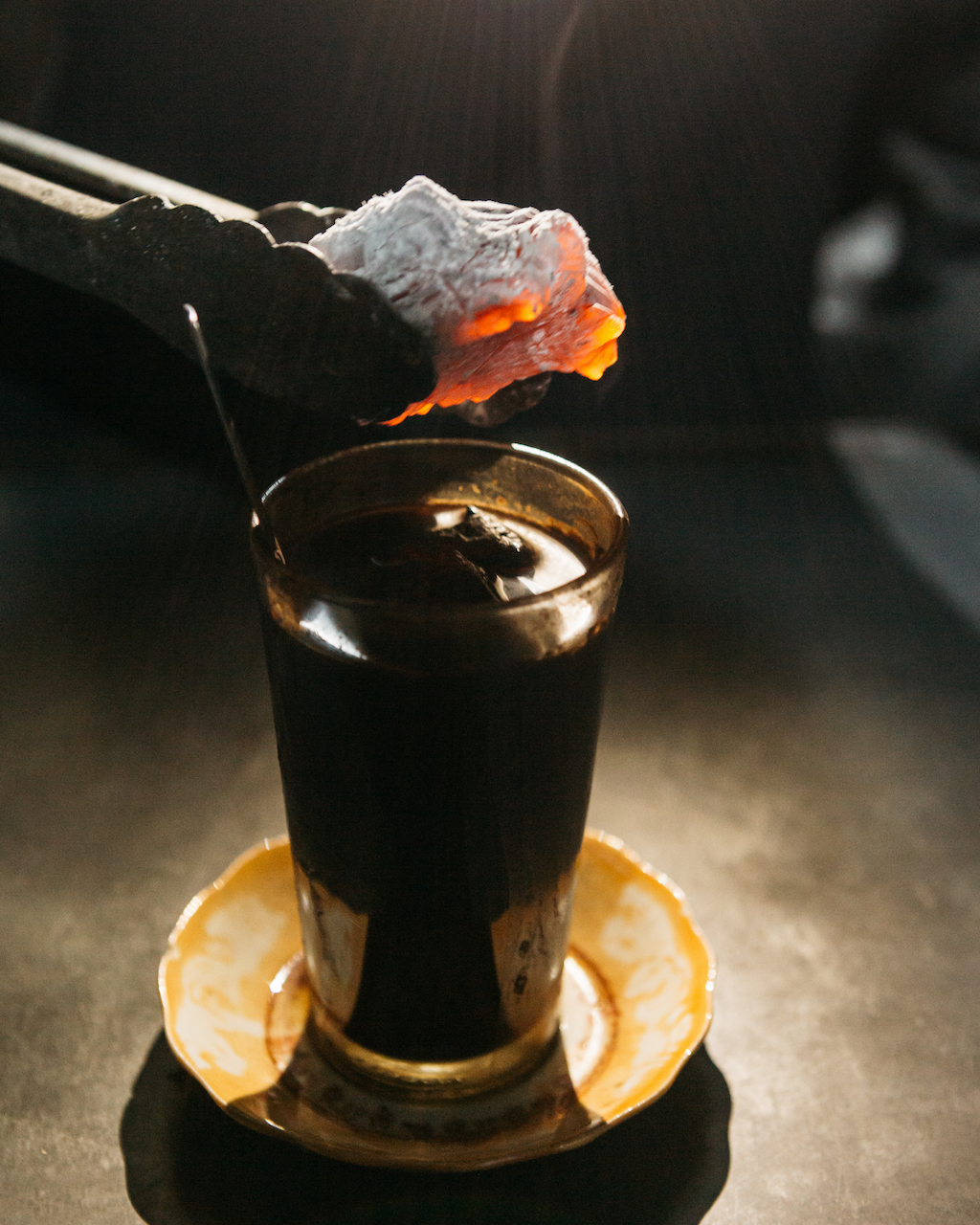
With its ancient temples and its rising contemporary art scene, Jogja has claims to fame that are both old and new. Its street food, however, is a bit of both. While long known and beloved by locals and domestic travellers, this delicious product of sociological factors and bold flavours is now winning hearts and stomachs from far and wide. And the amiable stallholders, custodians of this distinctive cuisine, only entice you further to become part of Jogja’s ongoing culinary story.
Where to find them
1. Mangut Lele Mbah Marto
Nggeneg Hamlet, Kec Sewon, +62 821 3737 3477. Open daily from 10am to 4pm
2. Lupis Mbah Satinem
No 52–40 Jl Bumijo, Bumijo, Kec Jetis. Open daily from 6 to 8am
3. Angkringan Kopi
Jos Lik Man Jl Wongsodirjan, Sosromenduran, Gedong Tengen. Open daily from 2pm to 3am
4. Kalika Prajna
Yogyakarta Night Walking and Food Tours
SilkAir flies daily between Singapore and Yogyakarta. To book a flight, visit singaporeair.com
SEE ALSO: This is Yogyakarta’s trendiest neighbourhood right now
This article was originally published in the October 2019 issue of Silkwinds magazine
The post Yogyakarta: The way to this city’s heart is through its food appeared first on SilverKris.
from SilverKris
No comments:
Post a Comment